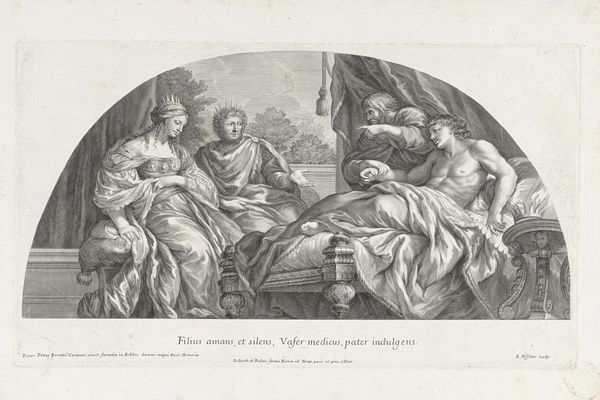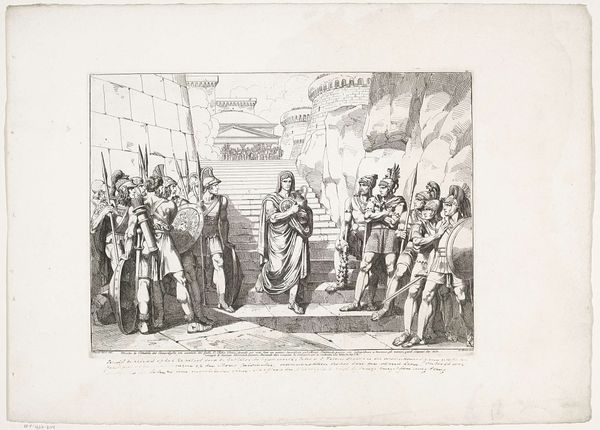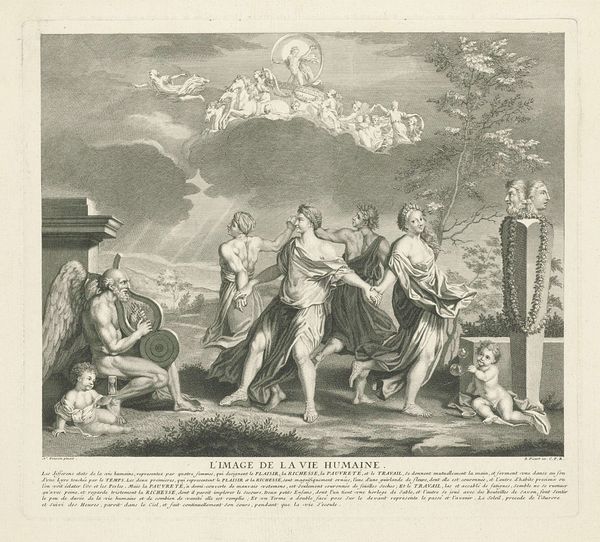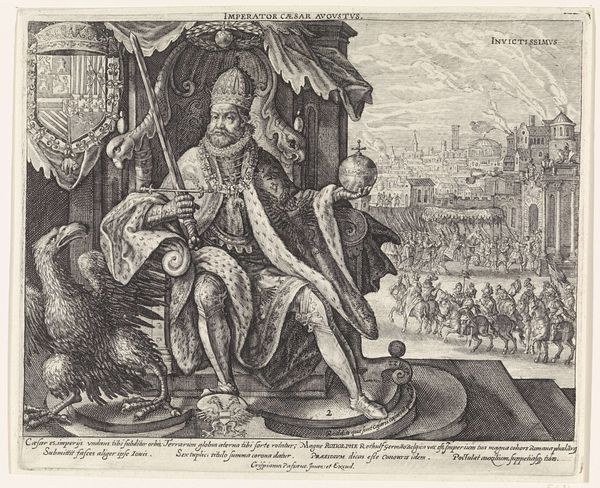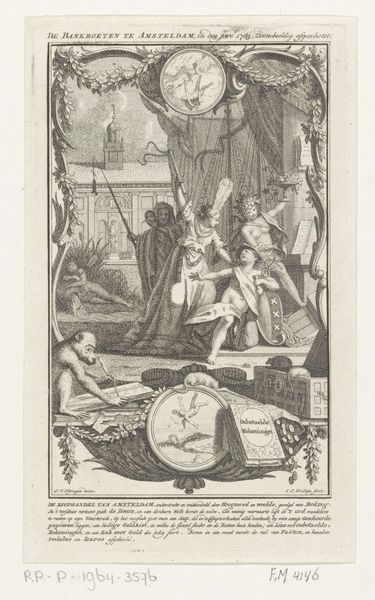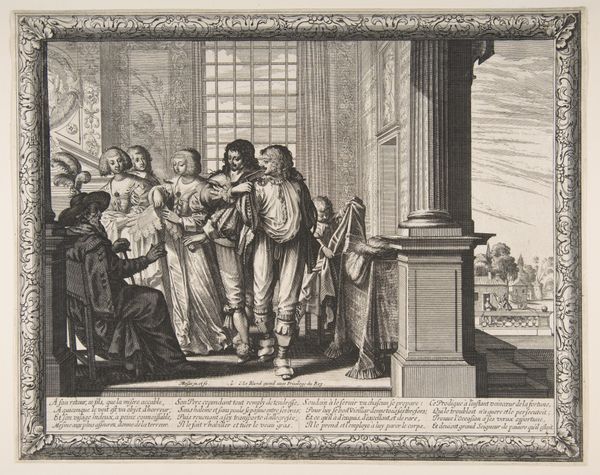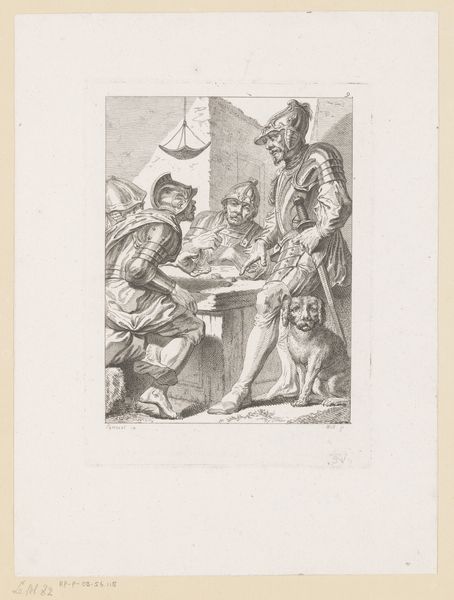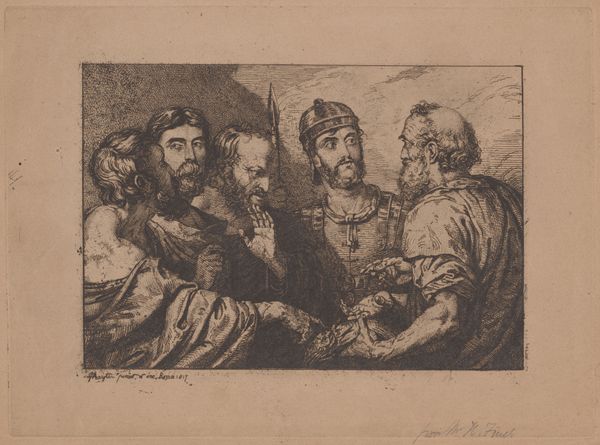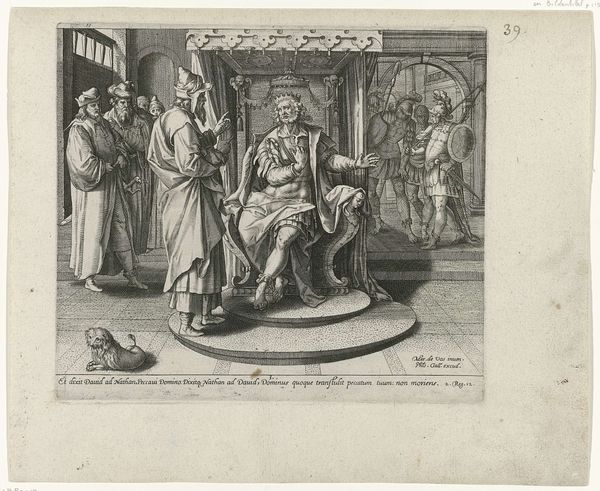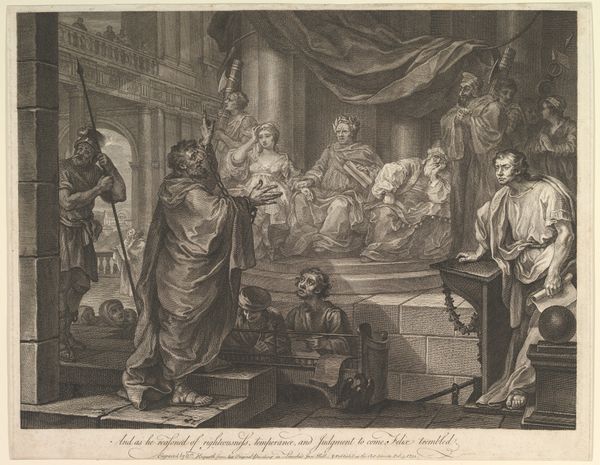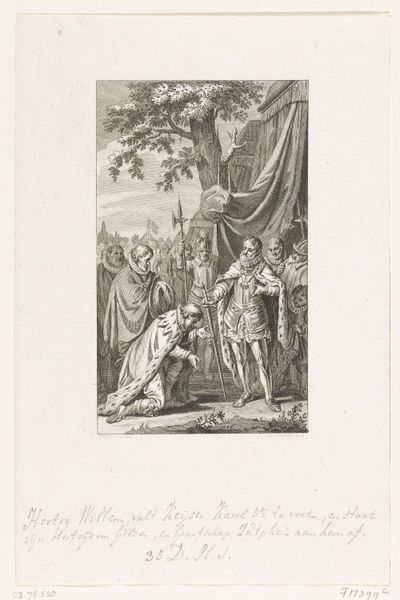
Thomas Howard, 2e graaf van Arundel en zijn vrouw Alatheia Talbot 1635 - 1675
0:00
0:00
engraving
#
portrait
#
baroque
#
history-painting
#
engraving
Dimensions: height 310 mm, width 430 mm
Copyright: Rijks Museum: Open Domain
Editor: So, this engraving, "Thomas Howard, 2nd Earl of Arundel and his wife Alatheia Talbot," was made sometime between 1635 and 1675 by Lucas Vorsterman I. I find the presence of all of these worldly possessions – the globe, the armillary sphere, even the classical sculpture – quite intriguing. What do you see in this piece? Curator: I see the symbolic language of power and influence rendered meticulously in lines of ink. Look at how the globe is positioned: their connection to it suggests dominion, perhaps even a claim on the world itself. Editor: So, it's about projecting an image of control? Curator: Precisely! These objects, each with layers of historical and cultural significance, construct a narrative. What does the presence of the sculpture suggest to you? Is it merely decorative or does it embody deeper concepts? Editor: It evokes ideas of classical virtue and intellect, perhaps aligning the Howards with those values? Curator: Exactly! The artist carefully selects imagery that amplifies the sitter's prestige, connecting them to a lineage of greatness. It’s about shaping perception, ensuring their legacy. Do you think this form of messaging still exists? Editor: Absolutely. I’ve never really thought about older artworks being used this way, it is definitely something to consider in a modern context as well. Thanks! Curator: Indeed! We explored visual language of identity, power, and enduring influence within it, which continues to inspire.
Comments
No comments
Be the first to comment and join the conversation on the ultimate creative platform.
